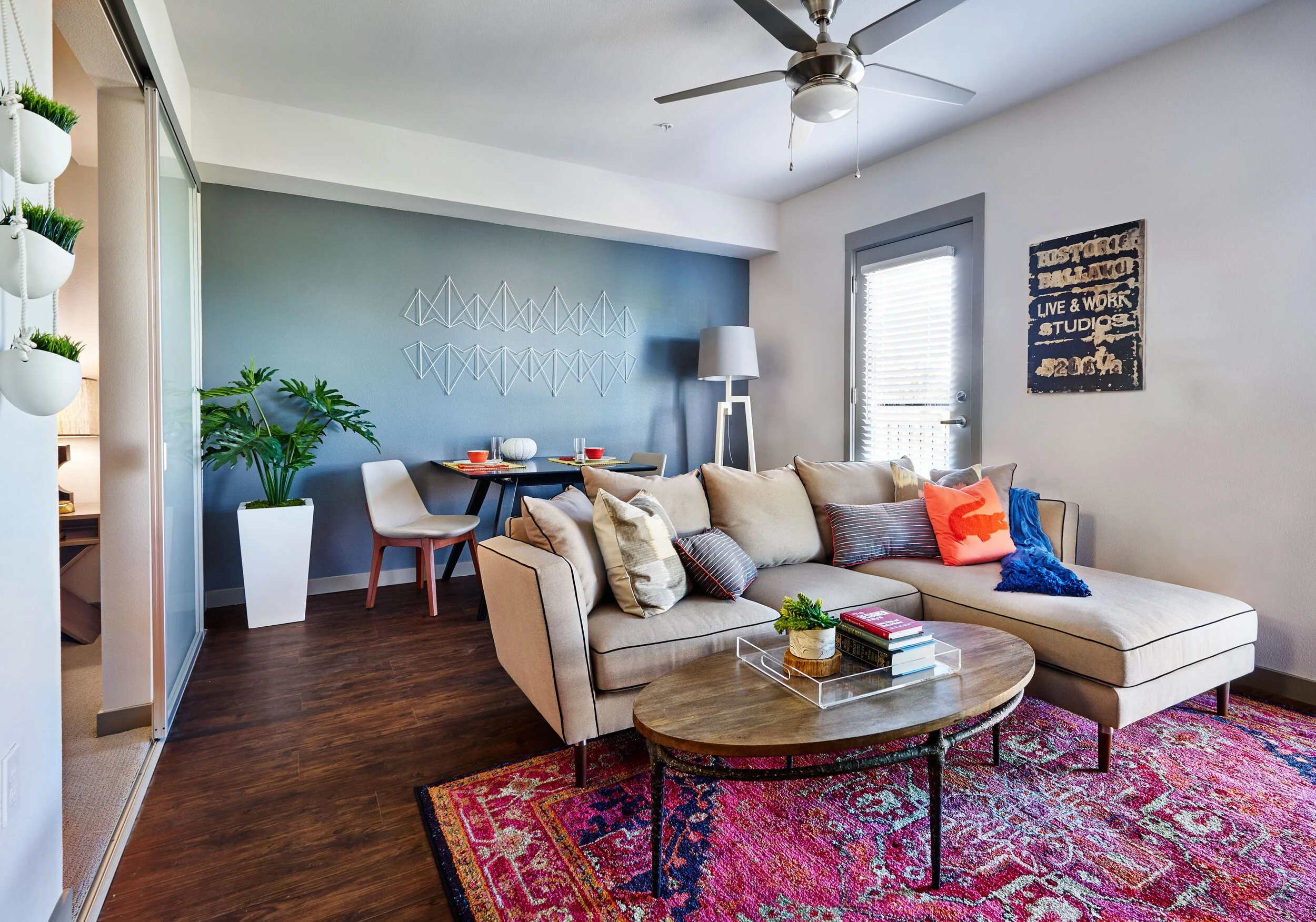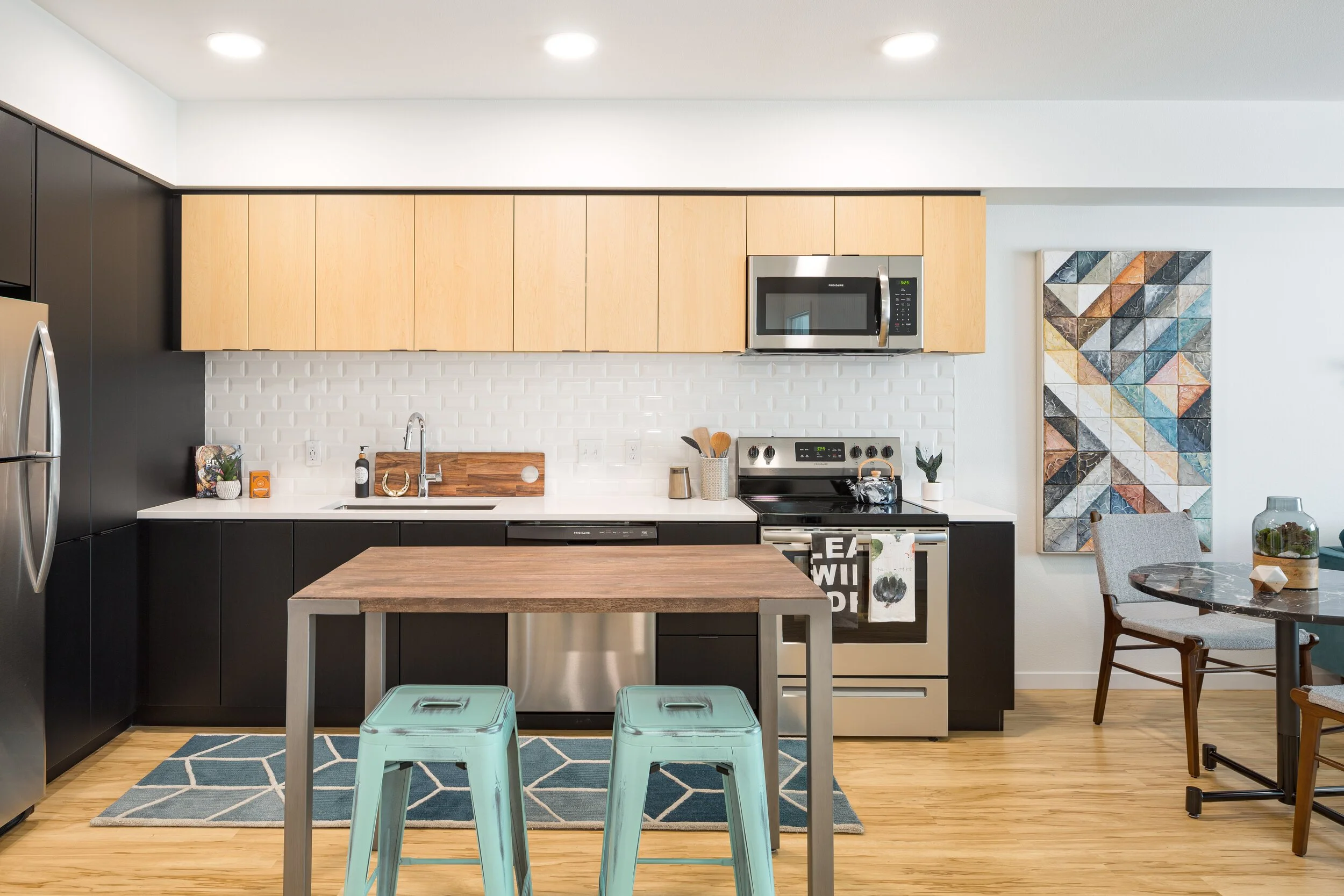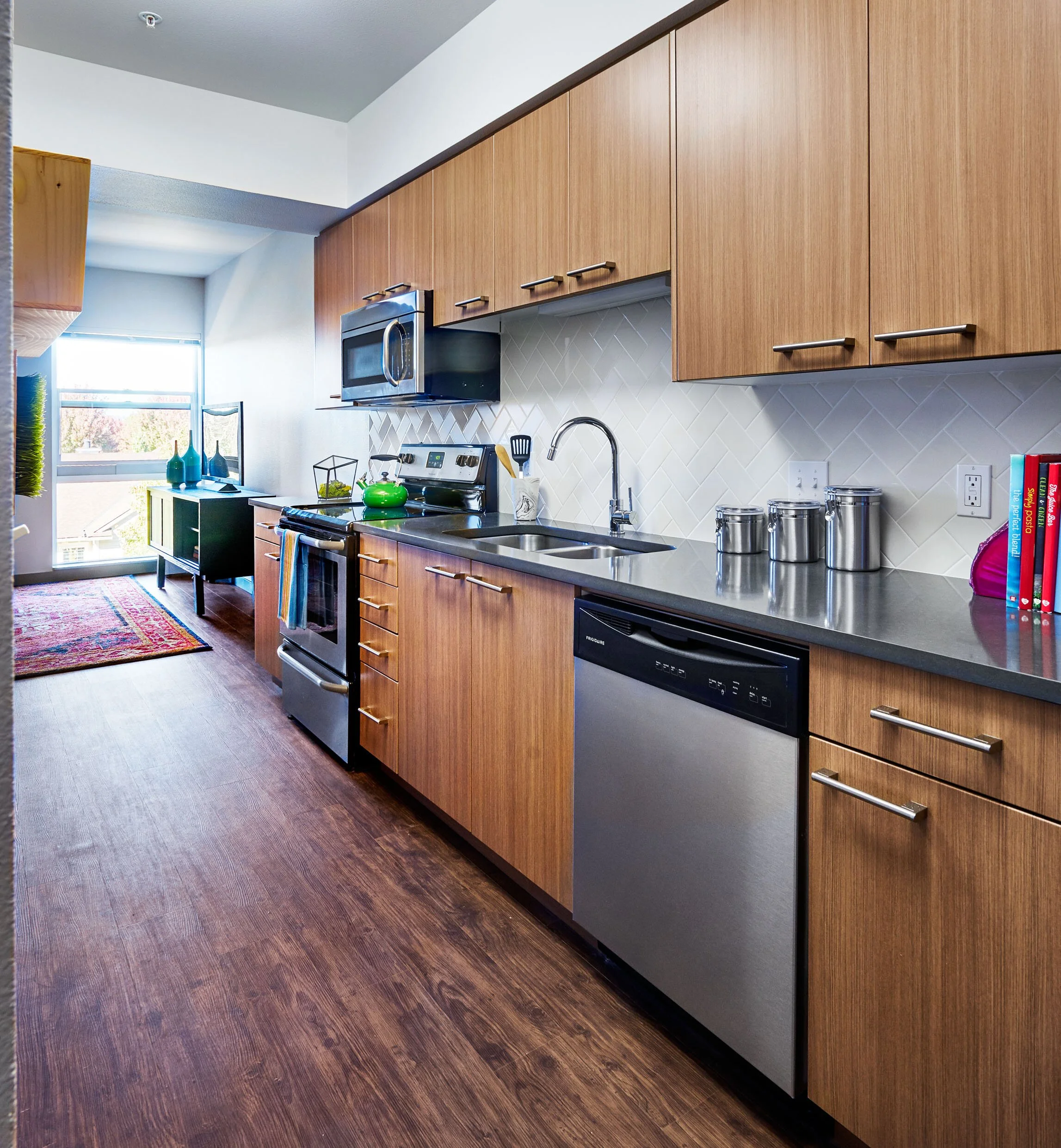Standing the Test of Time & Tenants - Multifamily Unit Finish Selections
Have you ever been inside of a friend’s cute vintage apartment building, or perused listings online (be honest) imagining your life in a beautiful apartment that has stayed relatively the same since the mid-1900s? Think about why these places seem so appealing, even now. They’re simply timeless. Not only are they seemingly always in style, but their finishes have stood the test of time and the test of tenants throughout the years. When specifying unit finishes for our projects we think about these wonderful vintage apartments and take notes.
Let’s start from the ground up. Literally. To the surprise of many, real wood flooring is rare in commercial multifamily housing. To those in the know, solid tongue and groove floors prove to be too expensive to today’s tight budgets and even more costly to properly maintain over time. As projects grow larger and larger the idea of maintaining and refinishing wood floors over hundreds of units also becomes somewhat unrealistic.
An alternative to wood flooring for unit common areas as well as bathrooms and sometimes bedrooms is LVT or luxury vinyl tile. Sometimes LVT is also referred to as LVP, luxury vinyl plank. LVT technology has progressed, especially in the last decade to have more realistic wood look options as well as faux stone and concrete looks. Often it is hard to tell LVT from actual Wood flooring with a successful install. LVT is extremely durable and easy to install. Many LVT products offer varying wear-layer thicknesses to meet budget requirements. Thicker wear layers directly correlate to longer life-spans of the product.
However, wood flooring is not unheard of in multifamily projects. Condo properties and in apartment buildings with special upgraded units are often types of projects that are able to use engineered hardwood to boost appeal to design-keen residents. Engineered hardwood is real wood layered on top of a plywood or composite substrate. The construction of this product offers cost savings, environmental benefits, and sometimes acoustically beneficial qualities to a unit’s flooring assembly when compared to solid wood floors.
We don’t often carpet entire units. We reserve carpet for unit bedrooms and sometimes bedroom corridors depending on how large of a unit we are working with. Studio apartments are more attractive with LVT throughout in lieu of carpet.
A similar plot line is followed when it comes to kitchen and bath millwork in multifamily apartment and condo units. Rarely is it cost-effective to use real wood cabinetry in any large-scale situation other than historical renovation. Effective solutions that GHID uses are thermofoil and melamine/laminate cabinets. Thermofoil cabinetry uses a vinyl surface which is vacuum sealed and fused to an MDF substrate creating a virtually seamless cabinet door with clean edges and corners. Melamine/laminate cabinetry uses sheets adhered and glued to MDF substrates with excess material trimmed from the edges. Melamine is the less expensive than thermofoil but its edges are less perfect and require matching edge-banding. Most often in apartment buildings, melamine cabinetry is used and residents often have no idea that their millwork is not real wood.
When selecting cabinetry finishes, GHID emphasizes timelessness as amenity spaces are easier to remodel than dozens of units. That being said we often prefer to select neutral light or dark wood tones as well as neutral solid colors. To add interest, it is often useful to combine solid and wood tones. Exceptions can absolutely be made if the properties’ brand communicates well with bright or dramatic colors.
Countertop selections in units can vary by project type. Man-made or natural stones have a place in apartment situations as well as for-sale condo units depending on surface type. The most cost-effective and durable countertop for an apartment unit is a man-made quartz solid surface. Solid surfaces products can be made to match stones, concrete or be true to their own form. These products are extremely durable as well. Certain types of granite such as absolute black granite can be cost-effective and attractive natural stones for apartments. Rented apartments should stay away from marble and soapstone due to cost and maintenance issues.
Condo units are more generous in terms of selection when specifying as individual owners are in charge of maintenance. In any case, choose something neutral or close to it unless your property’s brand allows.
The kitchen backsplash is often the most memorable of unit finishes. For us, the backsplash is an opportunity to make a statement. Be it a statement of simplicity with a white square subway tile or something with a little more of a handmade look. Texture of backsplash materials also offer key memory points during unit tours. Bold statements with color and texture are often more easily permitted at a unit’s backsplash than elsewhere so it is okay to select something a little more dramatic. That is, if drama is what the project wants to convey.
Continuing the countertop material onto the backsplash is also an attractive look but is often more expensive than installing tile. Backsplash selection is likely one of the most effective ways to distinguish your property’s units from those of others when it comes to finishes.
The key to creating attractive units with longevity is to select quality, durable materials with timeless colors and finishes. Selecting appropriate materials to function properly in specific areas within a unit reduces wear and subsequently improves resident experience and retention.








